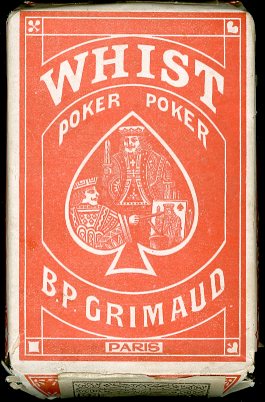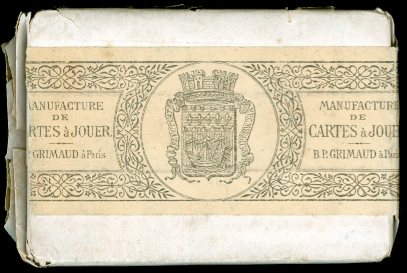October 2008
There were a few
flea markets, a collectors fair and a meeting of the Dutch playing card
collectors this month, so it's not a surprise that we gathered a good number of
new decks this month. Even on one of the last days friends brought us a deck
from their vacation in South-Africa, which was a serious challenger. But this
time the (international) meeting of the Dutch playing card collectors in
Nieuwerbrug brought us our new "Deck of the Month".
It was on
offer by a Belgian collector and although we knew that we had this pattern in
our collection, there was something unusual about the deck and as the price was
very reasonable it was quickly decided to take it along. Of course it wasn't
the only deck that we acquired during the meeting, but when we got home it was
the first one to be checked. And our gut feeling turned out to be right........
it was an unusual variation. At least for us.
|
We already have 2 versions of this deck in our collection. Both
were made by B.P. Grimaud and consist of 52 cards and a joker. The pattern is known here as "cartes
hollandaises". Both have a French tax stamp and were probably made
in the 1920's.
The first (here on the right) was published as
"Luxe Bridge Poker" and the cards measure 85x56 mm. The second is
a patience deck, that was published as "Nr 536", measuring
44x31mm. The patience deck only has 2 indices.
|
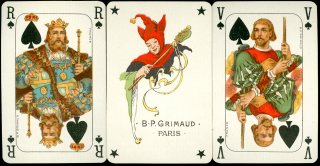
|
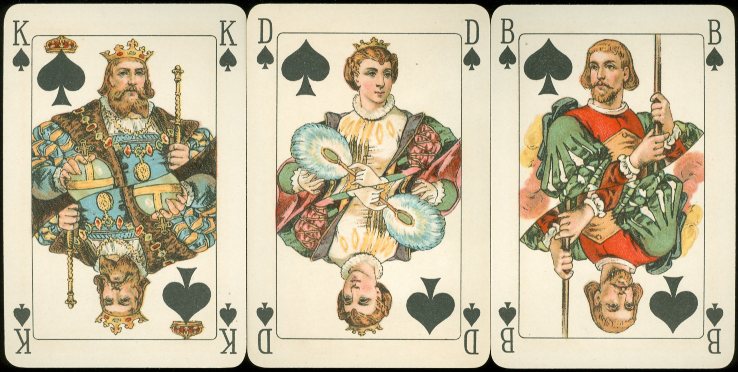
Our deck of the month
was also made by B.P. Grimaud. The pattern is the same and this deck was also
printed in chromolithography. But besides the fact that the colours used on the
courts are softer, there are a few other differences too. The first one you
cannot see: the cards are somewhat larger and measure 91x62 mm.
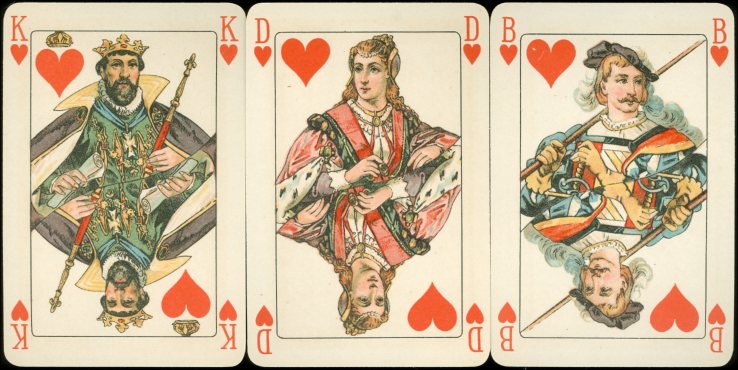
The obvious
difference is that the indices are not French, but German. Also the names of
Grimaud and their location Paris are not mentioned along the sides of the courts
anymore. The maker's name is now on the back of each card (see below).

The deck was
published as "Whist poker No. 154" and consists of 52 cards only. The
cards have gold corners.
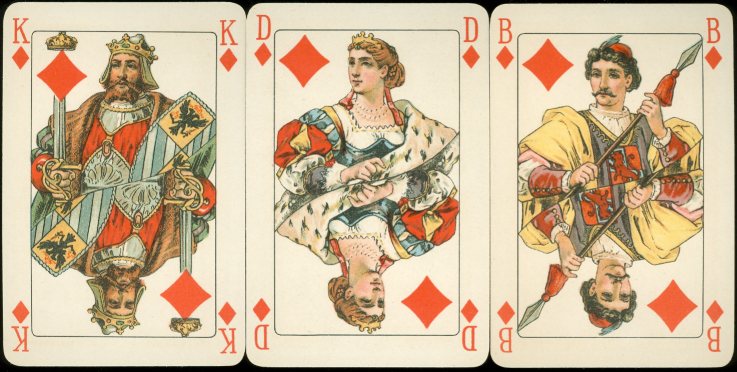
Another remarkable
feature is the "X" on the 10's. That's highly unusual in a French
deck. There are a few German manufacturers (C.L. Wüst for instance) who have
used this feature and in some German patterns it is used too. But these are
regional patterns and there's no association there with this pattern. However,
the Swiss pattern also uses this feature and the Swiss manufacturer Müller has
often used it in combination with other (fantasy) patterns too. We have to be
careful, but this feature -in combination with the German indices- could suggest
that the deck was made by Grimaud for export to Switzerland.

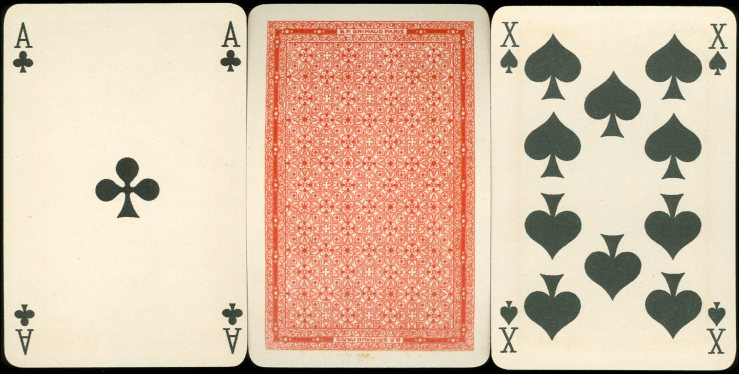
But then again
there's the French text on the wrapper....... can anyone help us out?
BACK TO PRESENT MONTH






